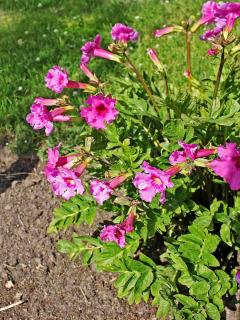

Incarvillea is a flower that is both hardy and very ornamental with beautiful rosettes of flowers.
Key incarvillea facts:
Name: Incarvillea
Family: Bignoniaceae
Type: perennial
Height: 15¾ to 23½ inches (40 to 60 cm)
Soil: rather rich
Exposure: sunny and half-shade – Flowering: May to June
It’s easy to care for, it is often used to chase away moles… though not everyone agrees on its effectiveness!
There are 14 varieties of Incarvillea, with Incarvillea delavayi being the most common.

Spring planting is possible but ensure regular watering.Dig a hole about 4 to 4¾ inches deep (10/12 cm) and maintain a spacing of 6 to 7¾ inches (15/20 cm) between each rhizome.
You can sow Incarvillea seeds in the spring, from February until May under shelter and in May-June directly in the ground.
For sheltered sowing, wait until the end of the ice saints before placing.
No pruning is necessary.
You can remove the faded flowers as they appear, this stimulates the emergence of new flowers.
These nice little perennials offer a beautiful spring bloom that extends until early summer.
Forming pink, purple or white trumpets depending on the species, it will easily find its place in a bed, border, or planter.
Adding some type of rich soil amendment is desirable as this plant has high nutritional needs.